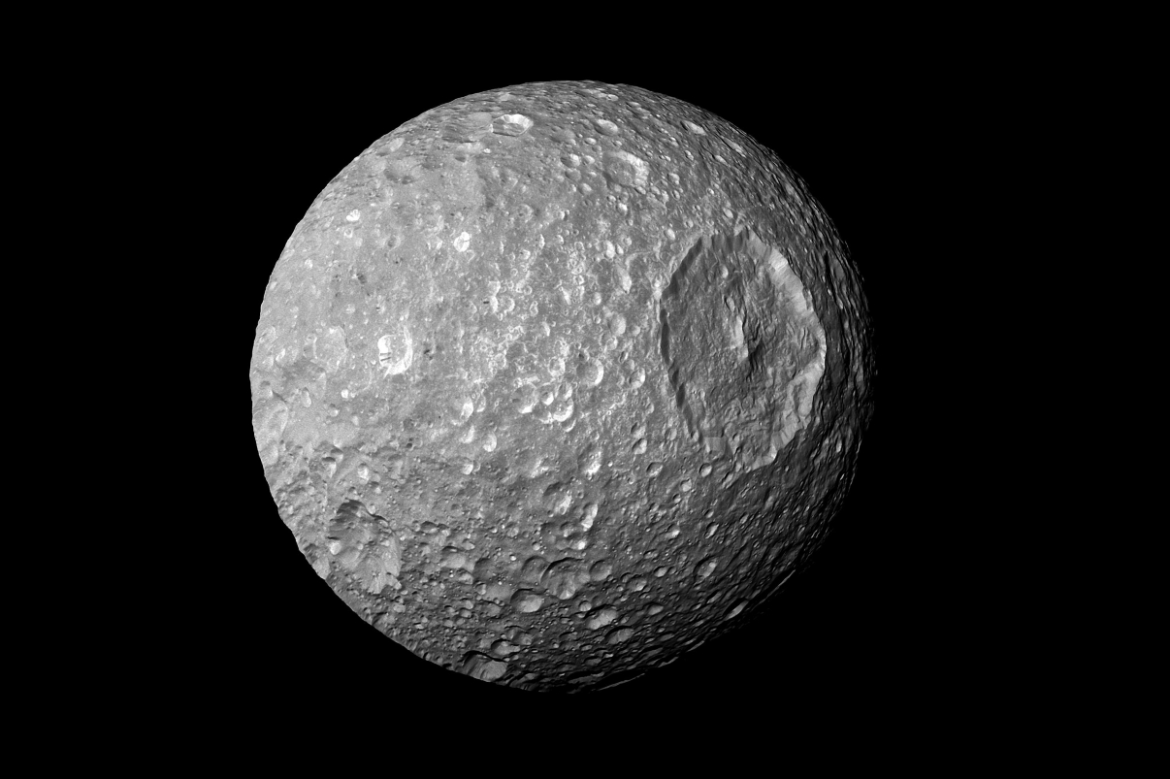
An Ocean, Far Far Away
Could Saturn’s moon Mimas, affectionately known as the “Death Star” for its Star Wars-like appearance, conceal further enigmas? Calculations suggest a vast ocean of liquid water might exist under the crater-pocked surface of this small moon.
A revisited analysis of data from NASA’s Cassini spacecraft indicates a slight shift in Mimas’ closest approach to Saturn over 13 years, hinting at its internal structure influencing the gravitational interplay with the planet. Astronomer Valéry Lainey of the Paris Observatory, along with colleagues, argues that such orbital dynamics, alongside previously noted lunar oscillations, suggest a watery interior.
The notion of possible subsurface liquid water on Mimas isn’t new. A 2014 study had posited that minor rotational wobbles of the 400-kilometre-wide satellite, one of Saturn’s smallest moons, might hint at an underwater reservoir beneath its icy cap. Critics, however, contended that Saturn’s gravitational pull would necessitate significant fissures in the moon’s icy cap, which were not observed, casting doubt on this theory.
Yet, recent findings have even swayed some sceptics. Updated calculations propose Mimas might feature an icy crust about 20 to 30 kilometres thick, overlaying a 70-kilometre-deep ocean atop a rocky core. Lainey and colleagues speculate the ocean may have formed sometime between 5 to 50 million years ago, which is an insufficient duration for the moon’s surface to show drastic alterations.
Those who oppose this idea argue that although there was not enough time for the hypothesised ocean to break up the surface, there should be signs of compaction. Water, occupying less volume than ice, would create gaps beneath the crust, leading to visible traces. Yet no evidence of such phenomena has been observed.
This discovery draws Mimas closer to its sibling Enceladus, another moon of Saturn that is already known to have a subsurface ocean. Both moons, residing at similar distances from the gas giant and similar in size —with the icy Enceladus measuring around 500 kilometres in diameter and the slightly smaller Mimas at 396 kilometres— underscore the potential prevalence of hidden oceans in the outer Solar System. The geological youth of Mimas’ ocean is particularly thrilling to researchers, suggesting that future probes could penetrate the icy surface to study the interactions between liquid water and the rocky core below.
REFERENCES
- 1. https://www.sciencenews.org/article/saturn-moon-mimas-hidden-ocean
- 2. https://www.space.com/saturn-death-star-moon-mimas-liquid-subsurface-ocean
